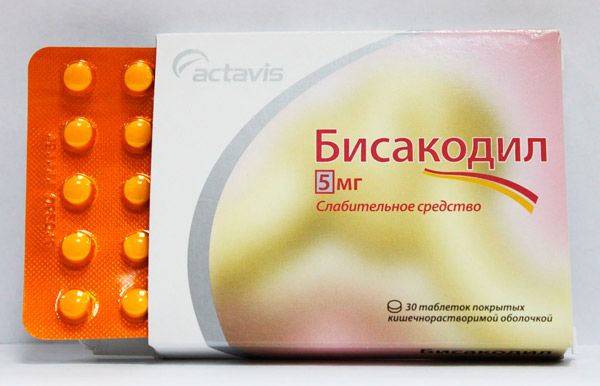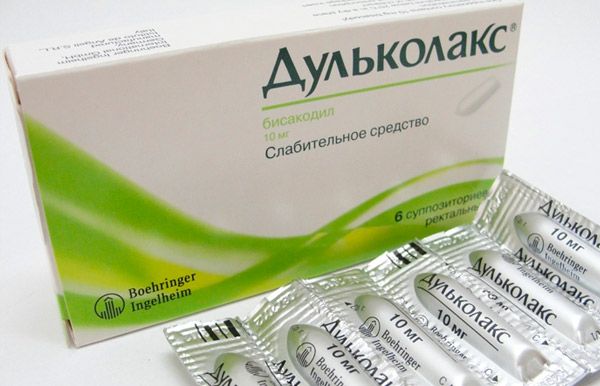Medical expert of the article
New publications
Preparations
Laxative Slimming Pills
Last reviewed: 23.04.2024

All iLive content is medically reviewed or fact checked to ensure as much factual accuracy as possible.
We have strict sourcing guidelines and only link to reputable media sites, academic research institutions and, whenever possible, medically peer reviewed studies. Note that the numbers in parentheses ([1], [2], etc.) are clickable links to these studies.
If you feel that any of our content is inaccurate, out-of-date, or otherwise questionable, please select it and press Ctrl + Enter.
Many people seeking to lose weight tend to believe that the means of constipation can help them achieve their cherished goal. With what it is connected, and indeed, do laxatives help lose weight?
Almost all teas and food additives, which are positioned as slimming products, contain laxative components. Their goal is to eliminate stasis of feces in the intestines, thereby facilitating the body 1-3 kg at a time. Therefore, you should not illusions yourself: the main direction of laxatives is not to "burn" fats, and not even to accelerate metabolism, but simply to cleanse the intestines.
Indications of the laxative Slimming Pills
Among those who lose weight, there is an opinion that the work of the intestines is a sign of good metabolism. This is not entirely true: most likely, a daily regular chair indicates only normal functioning of the digestive and evacuation functions of the digestive system. In this case, it is necessary to normalize the chair not with laxatives, but with proper nutrition, physical exertion, sufficient intake of liquid and plant products.
If you constantly take laxative pills for weight loss, then the body weight can really go down, but not at the expense of reducing the fatty layer, but by removing the stagnant feces from the body, as well as liquid with liquid feces. And it's not entirely harmless.
Simultaneously with the moisture from the intestine "useful" intestinal bacteria are washed out, electrolytic metabolism is disturbed. Moreover, most of the laxative tablets sooner or later cause addiction, atony of the intestine : subsequently, more powerful preparations will be required for the normal evacuation of the intestine.
Laxative tablets are prescribed only for the treatment of certain diseases of the intestine, poisoning or helminthiases, as well as for cleaning the digestive system before certain procedures and operations. Slimming pills are extremely undesirable to lose weight.
Release form
There are several categories of laxative tablets that have different mechanisms of laxative action.
- Laxative pills that cause fluid to enter the intestine. As a result, the feces soften and increase in volume. This category includes such tablets as CMC.
|
MCC
|
|
|
Pharmacodynamics Pharmacokinetics |
Microcrystalline cellulose is not only laxative diet pills, but also a valuable source of dietary fiber. The drug gently stimulates defecation, binds and removes toxic substances. The action of tablets occurs only in the intestinal cavity. |
|
Use of laxative tablets for weight loss during pregnancy |
The possibility of using MCC during pregnancy has not been investigated. |
|
Contraindications for use |
Facts of intolerance to cellulose, pregnancy. |
|
Side effects |
Allergies, discomfort in the abdomen, weakening of appetite. |
|
Method of using laxative pills for weight loss |
Take up to 6 tablets 15-25 minutes before meals, three times a day. Duration of admission is 1 month, then after 10 days of break the course can be repeated. |
|
Overdose |
Did not happen. |
|
Interactions with other drugs |
Concerning interactions with other medicines, you should consult a doctor. |
|
Storage conditions and shelf life |
MCCs are stored for up to 2 years under normal conditions. |
- Laxative tablets, which soften the feces due to the oils present in the preparations. Such preparations include capsules with linseed, pumpkin and other vegetable oils.
|
Linseed oil
|
|
|
Pharmacodynamics Pharmacokinetics |
Capsules with linseed oil have a mild laxative property, eliminate inflammation and vascular disease, improve the condition of the skin and hair. Kinetic properties have not been studied. |
|
Use of laxative tablets for weight loss during pregnancy |
Allowed to take in the recommended dose. |
|
Contraindications to use |
Excessive sensitivity to the composition of capsules. |
|
Side effects |
Not described. |
|
Method of taking laxative pills for weight loss |
For a laxative effect, capsules with linseed oil take 3 pcs. Morning and evening with food. Duration of admission is 30-60 days. The course can be repeated up to 2 times a year. |
|
Overdose |
Diarrhea, tenderness in the abdomen. |
|
Interaction with other medications |
It is undesirable to take together with other medications on an oily basis. |
|
Storage conditions and shelf life |
Capsules are stored for up to a year and a half in a cool place. |
- Osmotic laxatives, which increase the pressure in the intestinal cavity. Among these drugs, dofalac and forlax are the most known.
|
Dufalac |
|
|
Pharmacodynamics Pharmacokinetics |
Lactulose-based laxative tablets help increase intestinal osmotic pressure, which leads to fluid retention in the intestine, increased fecal mass, increased motility, and evacuation activity. Lactulose is not absorbed by the walls of the intestine. |
|
Use of laxative tablets for weight loss in pregnancy |
Negative effects of lactulose on pregnancy have not been identified, but in this period it is still recommended to take not tablets but Dufalak syrup. |
|
Contraindications to admission |
Propensity to allergy to laxative tablets, galactosemia. |
|
Side effects |
Increased gas formation, abdominal pain, diarrhea. |
|
Method of taking laxative pills for weight loss |
Duphalac is taken 1 or 2 times a day, 1-2 times each. Usually the reception lasts a few days. |
|
Overdose |
Pain in the abdomen, diarrhea, electrolyte exchange disorder. |
|
Interactions with other medications |
Testing was not conducted. |
|
Storage conditions and shelf life |
Dufalac is kept for up to 3 years in a room environment, away from children's access. |
|
Forlax
|
|
|
Pharmacodynamics Pharmacokinetics |
Laxative drug based on macrogol, the effect of which is due to fluid retention in the intestinal cavity, which, in turn, facilitates the process of defecation. The effect of the drug is observed after 1-2 days after administration. |
|
Use of laxative tablets for weight loss during pregnancy |
Can be prescribed during pregnancy. |
|
Contraindications for use |
An allergic organism, colitis, Crohn's disease, the probability of mechanical or spastic obstruction, the probability of intestinal perforation, an unidentified cause of pain in the abdominal region. |
|
Side effects |
Increased formation and release of gases, nausea, diarrhea. |
|
Method of using laxative pills for weight loss |
The medicine can be taken for 1-2 pcs. In a daily, one-time, with food. It is not recommended to take the remedy for more than 3 months. |
|
Overdose |
Acute diarrhea. |
|
Interactions with other drugs |
Are taken separately from any medications. |
|
Storage conditions and shelf life |
Save 3 years at normal temperature, away from children's access. |
- Laxative tablets that irritate the intestinal walls, thereby increasing peristalsis. Such tablets include bisacodyl, elmin, dibolax.
|
Bisacodyl
|
|
|
Pharmacodynamics Pharmacokinetics |
Laxative tablets irritate intestinal receptors, which leads to increased motor activity and increased mucus secretion. Tablets act approximately 6-8 hours later. |
|
Use of laxative tablets for weight loss during pregnancy |
Allowed with caution, under the supervision of a doctor. |
|
Contraindications for use |
Allergic mood of the body, intestinal obstruction, hernia infringement, colitis, undiagnosed pathologies of the abdominal cavity, inflammation of the appendix, peritonitis, hemorrhoids, bleeding. |
|
Side effects |
Diarrhea, abdominal pain, swelling, allergies, intestinal cramps. |
|
Method of using laxative pills for weight loss |
Take on 1 tab. At night or in the morning on an empty stomach. The drug should be washed down with a sufficient amount of liquid. |
|
Overdose |
Diarrhea with dehydration, intestinal atony. |
|
Interactions with other drugs |
Do not use with antacids, dairy products and alkaline waters. |
|
Storage conditions and shelf life |
Tablets are kept for up to 3 years in a dry room. |
|
Dulcolax
|
|
|
Pharmacodynamics Pharmacokinetics |
Laxative tablets that irritate the mucous tissues of the digestive tract. The drug is expected to last for 6 to 10 hours. |
|
Use of laxative tablets for weight loss during pregnancy |
Take with great care, and only as a last resort. |
|
Contraindications to use |
Intestinal obstruction, hernia infringement, bleeding, colitis, proctitis, exacerbation of hemorrhoids, cystitis, the possibility of allergies. |
|
Side effects |
Allergies, painful spasms in the abdomen, diarrhea, bloating, dehydration. |
|
Method of using laxative pills for weight loss |
Take 1-2 tables. At night or in the morning on an empty stomach. |
|
Overdose |
Dehydration, electrolyte balance disorder, diarrhea, intestinal atony. |
|
Interaction with other drugs |
Do not apply simultaneously with antacids, dairy products and hydrocarbonate mineral waters. |
|
Storage conditions and shelf life |
Save up to 5 years in the room, out of the reach of children. |
|
Enterolax |
|
|
Pharmacodynamics Pharmacokinetics |
Laxative tablets based on sodium picosulfate. At reception there is a stimulation of receptors mucous, the motor function and advance of fecal masses amplifies. The effect is detected during 6-12 hours from the moment of admission. |
|
Use of laxative tablets for weight loss during pregnancy |
Not used. |
|
Contraindications to prescription |
Acute inflammation of the digestive tract, intestinal obstruction, tenderness in the abdomen of incomprehensible origin, lack of fluid in the body, periods of pregnancy and breastfeeding, the likelihood of an allergic reaction. |
|
Side effects |
Allergy, spastic pain in the abdomen, diarrhea, intestinal atony, dehydration, muscle weakness, arrhythmia. |
|
Methods of using laxative tablets for weight loss |
1 tablets are swallowed. At night. Duration of admission - no more than five days. |
|
Overdose |
Spasms in the intestines, diarrhea, dehydration, intestinal colic. |
|
Interactions with other drugs |
Undesirable simultaneous use with diuretic medications, cardiac glycosides, antibiotics. |
|
Storage conditions and shelf life |
Tablets are kept at normal temperature, up to 3 years. |
- Vegetative laxative tablets.
|
Ore extract |
|
|
Pharmacodynamics Pharmacokinetics |
Laxative phytochemical based on buckthorn. Kinetic properties have not been studied. The laxative effect is observed after about 10 hours. |
|
Use of laxative tablets for weight loss during pregnancy |
Not used. |
|
Contraindications for use |
The likelihood of allergies, inflammatory reactions in the intestines, bleeding (including uterine), periods of pregnancy and breastfeeding. |
|
Side effects |
Allergies, dermatitis, pain in the abdomen, a more intense color of the urinary fluid. |
|
Method of using laxative pills for weight loss |
Take 1-2 tables. At night. |
|
Overdose |
Addiction, atony of the intestine. |
|
Interactions with other drugs |
No data. |
|
Storage conditions and shelf life |
Keep in normal conditions, up to 3 years. |
|
Regulax
|
|
|
Pharmacodynamics Pharmacokinetics |
Laxative tablets based on senna leaves and fruits. |
|
Use of laxative tablets for weight loss during pregnancy |
Used with extreme caution and under the supervision of a doctor. |
|
Contraindications for use |
Hernia infringement, intestinal obstruction, inflammatory reactions in internal organs, unclear origin of abdominal pain, bleeding, allergy, severe forms of dehydration. |
|
Side effects |
Spastic pains, increased gas formation, allergies, nausea. |
|
Method of using laxative pills for weight loss |
Take inside, at bedtime, 1 pcs., Thoroughly chewing. Duration of reception - no longer than 14 days. |
|
Overdose |
Intestinal pseudomelanosis, dehydration, the appearance of protein in the urinary fluid. |
|
Interactions with other drugs |
Do not use in combination with diuretics, glucocorticosteroid hormones, medicines based on the rhizome of licorice, antibiotics of the tetracycline series. |
|
Storage conditions and shelf life |
Save up to 3 years in places inaccessible to children. |
- Laxative tablets with prebiotics, restoring intestinal microflora and mildly stimulating defecation.
|
Bifidumbacterin
|
|
|
Pharmacodynamics Pharmacokinetics |
Tablets for the restoration of intestinal flora, with a slight laxative effect. The drug contains live bifidobacteria, which help normalize the function of the digestive tract and activate metabolism. |
|
Use of laxative tablets for weight loss during pregnancy |
Can be used with doctor's permission. |
|
Contraindications to use |
The presence of an allergic tendency of the body. |
|
Adverse symptoms |
Allergy. |
|
Method of taking laxative pills for weight loss |
Take inside 2 table. Before or during meals, up to 3 times a day. Duration of admission - 1 month. |
|
Overdose |
Bloating, rumbling, diarrhea. |
|
Interaction with other drugs |
Not recommended combination with antibiotics. |
|
Storage conditions and shelf life |
Keep in a cool place, up to 2 years. Do not freeze and heat the drug. |
Let us summarize some of the results of this article:
- prolonged or uncontrolled intake of laxative tablets can lead to intestinal atony, impaired intestinal microflora and water balance in the body;
- laxative tablets relieve not from excess fat, but from some amount of feces in combination with a liquid and a beneficial microflora;
- take laxative pills for weight loss can only after consulting a doctor. Otherwise, you can cause irreparable harm to the entire body and the digestive system in particular.
Attention!
To simplify the perception of information, this instruction for use of the drug "Laxative Slimming Pills" translated and presented in a special form on the basis of the official instructions for medical use of the drug. Before use read the annotation that came directly to medicines.
Description provided for informational purposes and is not a guide to self-healing. The need for this drug, the purpose of the treatment regimen, methods and dose of the drug is determined solely by the attending physician. Self-medication is dangerous for your health.


 [
[





